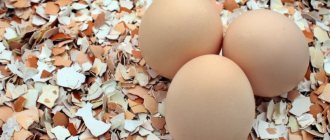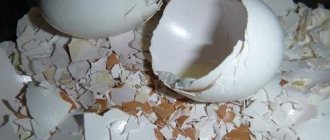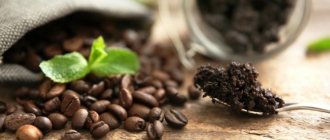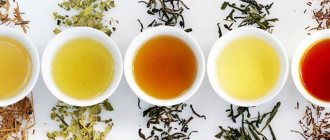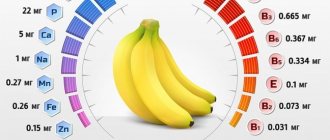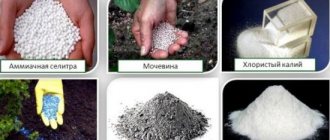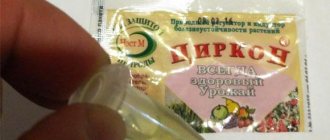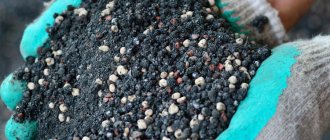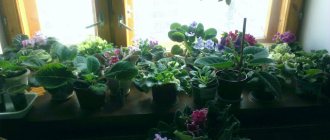Growing home flowers is quite an exciting activity. Moreover, its result is not only beautiful, but also useful for physical (thanks to the oxygen released) and psychological health, since contemplation of green plants relieves stress and restores mental balance.
But before the house is decorated with a riot of greenery, you will have to go through the sometimes difficult path of growing a small sprout into a beautiful flower. And not only good soil, lighting, temperature conditions and watering are important here. An important component is feeding - timely and complete.
Moreover, sometimes it is not at all necessary to buy a ready-made mixture; we have a lot in our kitchen. For example, eggshells, which we are used to throwing away as unnecessary. Meanwhile, it can be used to make an excellent fertilizer for indoor plants. With a minimum of labor and time costs, and no financial costs at all.
Chemistry lesson
First, a very brief description of what eggshells for plants are. Or more precisely, what components it contains and what effect these components have on the soil.
Eggshells are 90-95% calcium carbonate (CaCO3), popularly called limestone. Lime is generally good for increasing or stabilizing soil pH, but the effects of eggshells are very slow. The fact is that in order to dissolve this very lime, carbonic acid (HCO₃) must be present in the soil, which is formed during the growing season in the root system of the plant. And with the help of carbonic acid, a compound (Ca (HCO3)2) is formed - calcium bicarbonate, which in turn forms calcium ions.
What does all this ultimately lead to? First, upon contact with water, the pH value slowly but steadily increases. And secondly, calcium ions released during the reaction with carbon dioxide, as it were, cement the soil, making it more dense.
The conclusion naturally arises: eggshells as a fertilizer are suitable for increasing the pH value of the soil, but under the condition of an absolute calcium deficiency. Therefore, be sure to test the substrate before use.
Signs of excess and deficiency of essential substances
In addition to constantly feeding indoor plants, shells can also be used to replenish the deficiency of certain substances. The main thing is, of course, calcium, which, as you know, the shell of eggs is rich in. But other substances can also be obtained from it. True, their quantity is still not as large as required for a complete diet, and an additional source is needed, for example, phosphorus, magnesium or nitrogen.
Signs of calcium deficiency in a “green pet”
But before you try to fill this deficiency, you should understand that it still exists. If flowers lack calcium, then the following points will indicate this:
- weak, thin, pale shoots that die quickly;
- yellowness along the edges of the leaves;
- the leaves become crooked and curl inward;
- short roots;
- the places where new shoots grow are deformed or they die.
In general, the lack of this element is easy to notice. It is responsible for the vitality and strength of shoots, and the absence of calcium instantly turns a beautiful plant into something sick and dull. Gradually, the death of the flower may even occur if the necessary measures are not taken in time. That is, it is necessary to start fertilizing with compounds containing the necessary elements in large quantities. And this is where the shell will help.
But you also need to be careful with increased calcium supplementation. An excess of this substance is harmful to plants. If the leaves on the flowers begin to turn yellow, and the veins become dark, then, most likely, it is worth limiting feeding with mixtures containing this substance.
Signs of excess calcium in a houseplant
In addition to deteriorating the general condition and appearance of indoor flowers, calcium interferes with the absorption of other microelements. This may result in spots on the leaves, changes in color, shape, falling buds, curvature of shoots and other negative manifestations - this means that the flower lacks some nutrients. And it is not at all necessary to increase feeding. Perhaps you just need to cut down on additional nutrition with calcium mixtures.
We can definitely conclude that eggshells are very beneficial for indoor plants. Moreover, it is also an almost free fertilizer that can be made quickly at home. But, like any other fertilizer, it should be used carefully, without being overzealous. Otherwise, instead of beautiful plants, you may end up with stunted and diseased ones, which will then take a long time to restore.
If you immediately start caring for your pets correctly, maintaining balance in everything, there will be no more problems with flowers. Except for one thing – where to find a place for new pets. After all, when everything works out and the result of care is visible, you want to buy more and more potted plants.
Waste from our table: fertilizer for soil from shells
Have you ever experienced unbearable joint pain? And you know firsthand what it is:
- inability to move easily and comfortably;
- discomfort when going up and down stairs;
- unpleasant crunching, clicking not of your own accord;
- pain during or after exercise;
- inflammation in the joints and swelling;
- causeless and sometimes unbearable aching pain in the joints...
Now answer the question: are you satisfied with this? Can such pain be tolerated? How much money have you already wasted on ineffective treatment? That's right - it's time to end this! Do you agree? That is why we decided to publish an exclusive interview with Oleg Gazmanov, in which he revealed the secrets of getting rid of joint pain, arthritis and arthrosis.
Attention, TODAY only!
There are a lot of egg shells left at home. I heard that the fertilizer made from it is very useful for flowers. Tell me how to fertilize indoor plants using eggshells?
It has long been known that egg shells contain many useful substances. That is why it is widely used as a fertilizer for various plants, which, after adding the shells, begin to grow faster and get sick less. It is also important that crushed shells decompose quite quickly in the ground. Both garden and indoor plants are fertilized with eggshells; the main thing is to prepare and use them correctly.
What are the benefits of fertilizing plants with eggshells?
Now let's move on to how and in what cases the use of fertilizer is not only justified, but also useful. Eggshell fertilizer contains not only lime, but also many other microelements that are necessary for flowers and many other plants:
- iron,
- fluorine,
- copper,
- manganese,
- molybdenum,
- phosphorus,
- sulfur,
- silicon,
- zinc.
But the predominance of lime in the composition seriously limits the scope of application. There are plants that are compatible with lime and those that are not. Therefore, before using the peels as fertilizer, it is necessary to check whether they are tolerated by lime.
Properly prepare and store
Proper storage of shells directly depends on how you prepare them. What matters here is how and where you store it. If you make mistakes at these stages, then fertilizer from such shells will only harm the plant. First, the shell must be cleaned of egg residues, it must be washed and disinfected. After this, the shells are left to dry in a dry and well-ventilated place. Some summer residents dry the shells directly over an open fire.
After drying, the shells must be crushed and placed in different containers with a tight-fitting lid. It will be nice if the crushed shells are stored together with the ash. This type of feeding will have the best results and will be preserved well. Remember, egg shells cannot be stored in cellophane. There, an environment of high importance is created, which adversely affects the shell.
Which plants should not be fertilized with eggshells?
First, about which indoor plants will fertilizing become poisonous? In short, these are all flowering plants that prefer acidic and slightly acidic soils. The list is quite extensive, so we will list only the most popular names in home floriculture. Indoor:
- azalea,
- camellia,
- monstera,
- pelargonium,
- tradescantia,
- violet.
Feeding plants with eggshells will definitely harm the following garden crops:
- hydrangea,
- poppy,
- raspberries,
- peony,
- sunflower,
- rhododendron,
- rose,
- Apple tree.
Note! It is still possible to apply eggshell fertilizer to these plants, but only once, and only if the acidity of the base substrate is below the required values - pH 5.0–6.0. Feeding plants with eggshells in this case can be useful if applied at intervals of 2-3 years.
Egg feeding at home
In addition to the undoubted benefits of the shell and its availability, an important advantage is that preparing future flower food is not difficult at all and it does not take much time. The main thing here is to prepare the eggs (or rather, what remains of them), and you can get started. There are several ways to make fertilizer at home from such a valuable ingredient. But one thing remains unchanged - only the shell of raw eggs is suitable as a top dressing; boiled ones already lose most of their benefits.
How to improve productivity? We are constantly receiving letters in which amateur gardeners are worried that due to the cold summer this year there will be a poor harvest of potatoes, tomatoes, cucumbers, and other vegetables. Last year we published TIPS on this matter. But unfortunately, many did not listen, but some still applied. Here is a report from our reader, we would like to recommend biostimulants for plant growth that will help increase the yield by up to 50-70%.
We advise you to prepare in advance for the summer season, pay attention to this biological product. There are a lot of positive responses.
Read…
- The simplest option is shells crushed in a coffee grinder or by hand. It can be mixed with soil prepared for planting. Or pour the shells onto the surface of the ground (about a third of a teaspoon per pot). Then, when watering, beneficial substances will flow to the roots of the flowers. But the first option is preferable, since the egg shell will gradually decompose in the ground, quickly releasing trace elements to the flowers. By the way, many experienced flower growers advise rinsing the shells well and drying them a little in the oven before use. This allows you to destroy possible pathogenic microorganisms, which can subsequently lead to root rot.
- Infusion from the shell.
It is believed that in this way the eggs completely release all the benefits into the water, and there is no risk of the proliferation of harmful microorganisms if the workpiece has not been properly processed. To get liquid fertilizer for plants at home, you need to pour crushed (preferably powdered) shells from five eggs into a liter of boiled water. Preparation of infusion from the shell Leave the mixture for five days, stirring occasionally. The resulting solution should be watered with indoor plants as usual. You can dissolve a little sugar in this infusion - such a remedy will be very useful for young plants. The glucose contained in such a solution will help new shoots develop, and calcium will make them stronger. - A rather interesting option for using eggshells is to plant young shoots in it. If you need to propagate an adult plant, then cuttings that have already given roots can be planted not in a pot, but in the remains of an egg. This way, the young shoots will receive the calcium they need for growth, and upon subsequent transplantation they will already be quite strong. You can use either halves of the shell as a temporary pot for plants, or even better, carefully remove only the top. Several small holes should be made in the base to drain moisture, then soil should be poured into the temporary shelter and a flower should be planted. When the plant becomes strong, strong and has a powerful root system, it can be planted in the main pot. It is not necessary to remove it from the shell; it is even better to leave it for further fertilization of the soil. Only the temporary pot should be slightly kneaded before planting in the ground, so that it is easier for the plant to break through the shell, and this way it will begin to decompose faster, giving all the benefits to the sprout.
- Some gardeners believe that it is useful to use the water that remains after boiling the eggs. Allegedly, it contains mineral salts that are so beneficial to plants. How true this information is is unknown. In any case, there will be no harm. But you can reuse water, while saving your finances.
Shells - a universal soil amendment
Similar methods of feeding indoor flowers can be used on their own or mixed with other substances. Just be sure to follow the dosage and frequency of fertilizer application. Plants usually require additional nutrition from March to October, when flowers enter the active growth stage.
Feeding is also needed after replanting and pruning. The rest of the time, plants only need watering. Excess mineral fertilizers can lead to disease and subsequently to the death of flowers. Therefore, you should carefully monitor the condition of your wards in order to take the necessary measures in time.
What plants can be fertilized with lime?
Now about which plants love eggshells.
Trees and shrubs:
- hawthorn,
- pear,
- honeysuckle,
- maple,
- gooseberry,
- larch,
- Linden,
- peach,
- boxwood,
- plum,
- currants (red and white only),
- cherries,
- conifers.
Flowers:
- aster,
- hyacinth,
- lily,
- tulip,
- cyclamen,
- chrysanthemum.
Garden crops:
- bell pepper,
- cabbage,
- onion,
- carrot,
- parsley,
- tomatoes,
- celery,
- beet,
- asparagus.
Note: Some varieties of blackberries and strawberries can be included in the list. As a rule, these are hybrids bred on the basis of varieties with the same characteristics, but less demanding on breeding conditions.
Household waste for good
A large selection of organic and mineral fertilizers is available in specialized stores. However, their prices are not affordable for every amateur gardener or summer resident. A very common way to provide nutrition to your green charges is to collect and use household waste. Many ways have been described to make fertilizer from potato peelings, fish bones, sugar and other food products.
Most families, without even thinking, throw away eggshells or egg whites when creating culinary masterpieces. While owners of house plants know that this can make an excellent fertilizer. Experiences of resurrecting almost dead bushes have been described repeatedly on various Internet sites and forums of amateur flower growers.
This method of fertilizing and caring for flowers is part of the folk heritage. It was passed down from mouth to mouth for many years, recorded in every possible way, until it ended up on the Internet. And so, if it seems to you that your plant is hopelessly lost, it has lost all its leaves and branches, new shoots, and especially flowers, have not appeared for a long time, then it’s time to take advantage of the last chance for salvation.
How to make plant fertilizer from eggshells
Let's start with the fact that one of the main rules of procurement is proper preparation of raw materials. First, be sure to wash the shells. Secondly, dry it thoroughly before putting it in a storage container. If this is not done, the protein remaining on the walls will begin to rot.
Now about the cooking methods and how to use both methods correctly. There are two of them - powder and infusion.
- The powder is convenient because it can be stored for a long time. In addition, crushed shells drain the soil well, making it looser and more breathable. It’s easy to prepare such fertilizer from eggshells: just crush the raw materials in a mortar or grind them with a coffee grinder. The finished powder is applied once a month into the hole before planting or into the root zone at the rate of 300 grams per 1 square meter. m.
- The infusion is a concentrate that will not only nourish the root system with calcium and other beneficial substances. Liquid garden fertilizer, for example, can make the soil less acidic and protect the root system from pathogens that cause rot. In order to make a concentrate, fill a three-liter jar 2/3 full with shells and fill with water. Exposure time is from five days to a week. The readiness signal is foam on the surface. Before using for watering, be sure to dilute the infusion! The optimal ratio of water to concentrate for further use is 5:1. The frequency of watering depends on the pH level. The higher the level, the less often you water, but not more than once a month.
Important! Calcium carbonate should never be used simultaneously with ammonium or phosphates. Therefore, allow at least three months between distributing fertilizers containing ammonium or phosphates and eggshells. When calcium and ammonium come into contact, ammonia gas with an unpleasant odor is formed. Calcium and phosphate together form poorly soluble calcium phosphates, which not only makes both nutrients unavailable to plants, but also harms the root system.
Use in the garden
Egg shells are very multifunctional in use; they will serve you both as fertilizer and as mulch, and also in pest control. Agree, few organic substances can boast such a wide spectrum of action. Egg shells will become your constant assistant both in the garden and in the vegetable garden, the main thing is to know how to use it correctly.
As a fertilizer
Egg shells are an excellent organic fertilizer; they are rich, primarily in calcium, its content in egg shells is 90 - 93%. In addition to calcium, the shell contains magnesium, sodium, phosphorus and zinc. You can absolutely safely use such fertilizers without fear for your health or the condition of your plants.
Liquid fertilizers
The good thing about liquid fertilizers is that they are quickly absorbed into the soil and the plant begins to receive nutrients as quickly as possible.
Liquid fertilizers based on eggshells include decoction and infusion. With their help, you can enrich the soil with nutrients that will help your plants grow fully and, in the future, bear fruit.
Powdered fertilizers
Fertilizers in powder form have a longer lasting effect than liquid fertilizers. They release their nutritional properties into the soil gradually, thereby enabling the plant to receive beneficial substances over several months. Powdered eggshell-based fertilizers include powder and flour. These fertilizers are used not only as a nutrient, but also as a soil deoxidizer.
Eggshells for loosening the soil
Egg shells are an excellent soil loosening agent. Loosening the soil is an extremely necessary component of agricultural technology for many crops. Heavy soils prevent air from penetrating into the soil, which negatively affects the development of the plant. Moreover, untimely weeding of the soil leads to the growth of weeds. In addition, weeding promotes better absorption of nutrients.
Most often, soils with a high clay content need regular loosening.
It is worth noting that almost all crops in the garden require this process, but it often takes a lot of effort and energy. You can loosen the soil using crushed eggshells, but it should not look like flour or sand. But only raw eggshells are suitable for this, because during heat treatment they lose almost all of their beneficial properties.
Shell pieces
Don't throw away eggshells, even if you don't intend to use them as fertilizer, you can use them to protect your garden beds from pests. If you make a small border of shells around the perimeter of your bed, not a single slug will be able to climb over this sharp-edged border. The mole cricket is also afraid of eggshells; if you season pieces of the shell with unrefined sunflower oil, the mole cricket will eat it and die.
In addition, pieces of eggshells will serve as excellent mulch.
So, the shell is not garbage, but a real godsend for the summer resident.
Pest Control
Every plant is attacked by pests, and there are many means to combat them, both organic and mineral. Eggshells are also included in the organic list. Here opinions are divided. Some summer residents claim that eggshells are an excellent tool in the fight against moles, slugs and mole crickets. To create such protection against slugs, you need to mix eggshells with ash. In addition, you can simply use crushed shells if the fight is aimed at other pests.
Summer residents who use this method of pest control prove that there is no better environmental protection. But here a split occurs: other summer residents say that this method of fighting parasites will not bring anything good, since such parasites easily bypass such a barrier. But this can also happen with mineral products, so do not underestimate the capabilities of eggshells.
Mulching
Egg shells can also be used as mulch. But you should understand that mulching with eggshells will not give an immediate effect. Such mulch will have a beneficial effect on the condition of the soil if the problem lies in excessive acidity or lack of calcium. In addition, the shell prevents the growth of weeds and promotes better moisture exchange.
In order to prepare mulch from eggshells, it must be cleaned and disinfected, then dried and crushed. There are ways that shells can be mixed with other substances and also mulched.
Soil deoxidation
If the soil on the site is quite acidic, it can be deacidified using egg shells. Eggshells have a special ability to lime the soil from excessive acidity. This is a rather long process; doing it once will not really solve anything. In order to deoxidize the soil, it is necessary to make a powder out of it and pour it into the holes before loosening the soil in autumn. This action must be repeated every 2 or 3 years, but do not overdo it, it is also important to monitor the alkalinity level.
Drainage for seedlings and flowers from eggshells
After boiling, eggshells can be used as drainage for indoor plants and seedlings. Most often, the remaining shells are used this way. After you have separated the shell from the egg, dry it. This drainage can be placed on the bottom of a flowerpot or on expanded clay. The advantage of such drainage is that:
- the roots of the plant have enough space to grow and thus are not cramped in the flowerpot;
- a plant with such drainage is easy to move from place to place;
- drainage allows unnecessary water to leave the soil;
- This is environmentally friendly, because after boiling the egg itself, the shell benefits the plant.
Eggshells for indoor flowers
A very large number of indoor plants will respond favorably to eggshells, but you should not spoil plants that grow in acidic soil with it. For indoor flowers such as orchids, hibiscus and others that love alkaline soil, you can use fertilizers such as powder, infusion, or decoction of eggshells.
Decoctions and infusions enrich the soil with useful minerals and promote better growth.
Houseplants will benefit from drainage from crushed shells. It does not prevent the roots from growing and removes excess moisture.
Container for seedlings made of eggshells
Carefully separated shells from the whites can become a convenient container for seedlings. This is an environmentally friendly “container” that can be planted in the ground along with the shoot. It will protect the sprout from the influence of pests and is simply easy to carry. To make one such container, you need to do everything slowly and delicately, so as not to damage the entire structure.
To begin, break one end of the egg and remove the white and yolk. Rinse and dry thoroughly, this will make further actions easier. Make a small hole at the other end, it will serve as an outflow of water. After completing these steps, fill the shell with soil and plant the seed. Care as you would for ordinary seedlings.
Accelerating seed germination
Eggshells are a source of many beneficial minerals, which help stimulate seed growth. Shell calcium reacts with seed proteins - this speeds up the germination process. In order for everything to go smoothly, the seeds are planted in the ground and sprinkled with a little flour from the shell and covered with earth on top. Such actions will help the seed “wake up” and begin its development. Moreover, plants that receive a sufficient amount of calcium in the initial stages of development have a stronger structure.
Protecting seedlings from blackleg using eggshells
Eggshells are also famous for preventing the appearance and development of blackleg. It is worth noting that blackleg can develop due to improper watering, but such a folk remedy as shells will help avoid this disease. To prevent the negative influence of blackleg, the ground is sprinkled with eggshell powder.
Compost and other uses
There are times when you need to add a few more ingredients to better absorb the shell minerals. In such cases, compost is made from egg shells, dolomite powder or ash, leaves and onion peels. All ingredients are added to boiling water and left covered for a day. The finished mixture is passed through a sieve and diluted with water, adding 10 liters of water to 1 liter of infusion. Water the plants with the prepared solution.
Fertilizing plants with eggshells and compost
Another possible use for eggshells is to enrich garden compost. A high pH value stimulates bacterial activity and thus speeds up the composting process. However, if the bacteria are too active, the volume of compost can be significantly reduced. Therefore, eggshells should only go into the compost with acidic material, such as bog plants, peat soil, softwood or oak leaves.
Read more about the types of fertilizers in our special article.
Nuances during preparation
Eggshells have a crystalline structure, so they easily release organic substances to plants. The main thing is not to be lazy, prepare the material in the required quantity and do high-quality processing. The shelf life of the harvested raw materials will depend on this. You will need to perform a few simple steps:
- clean the shells from protein residues and remove the film;
- wash to keep the material clean. This eliminates the possibility of the shell becoming rotten;
- dry in an oven or other place so that the shell becomes brittle;
- grind in a blender, coffee grinder, through a meat grinder or crush with a mortar;
- Place in a paper bag or jar with a lid for storage.
A storehouse of valuable vitamins and minerals
Among summer residents, the use of eggshells, which make up 10-12% of the total weight of the egg, is popular. Thanks to its rich mineral composition, it will make the soil more nutritious and fertile. This organic fertilizer does not harm the environment.
The shell contains:
- calcium,
- iron,
- copper,
- selenium,
- zinc,
- silicon,
- sulfur
- fluorine.
Silicon increases the ability of plants to photosynthesize. Calcium carbonate, zinc, selenium and copper strengthen plants, especially those that prefer an alkaline substrate. Plants that receive enough calcium have a more stable root system and age later. In gardens, calcium is used to deoxidize the soil. Calcium cations combine with organic substances contained in the soil, which improves its water-air parameters, promoting better plant growth.
The multicomponent mineral composition will help you get a rich harvest and beautiful flowers. To get the maximum benefit from eggshells for the garden, it is better to use this material from eggs from natural, ecologically raised chickens, then it will not contain harmful ingredients.
Chemical composition
In the 80s of the last century, an analysis of the chemical composition of egg shells was made, which scientifically confirmed its usefulness.
The reason for this is the rich chemical composition of eggshells:
- calcium in an easily digestible form (93% of the total);
- magnesium;
- sulfur;
- aluminum;
- phosphorus;
- iron;
- keratin;
- mucin
Calcium is one of the main building microelements.
In the shell it is contained in the form of salts and bicarbonates. Plants absorb them much better.
WHY DO YOU NEED EGGSHELLS. Pure calcium for the earth - video
Important!
Inside the shell there is a soft film covering it from the inside. It contains a lot of useful organic matter. It does not need to be disposed of.
When crushed, this valuable product alkalizes the soil. This is especially required for those soils that have high acidity, suitable for heavy and clay soil.
The soil into which eggshells are added becomes more nutritious and becomes loose and soft. This promotes the flow of oxygen to the root system of plants, normal growth and development. The aeration properties of the earth increase, which repels pests and even protects plants from certain diseases.
What should not be planted in shells?
Seeds of tall tomatoes for greenhouses will have a fairly developed root system that will not fit in the shell. You can grow seedlings of low-growing tomatoes and cherry tomatoes in shells.
You should not plant flower seeds in shells, as these plants need picking and a much larger container volume.
The main disadvantages of such a container for growing plants is that you need to carefully and painstakingly make holes at the top and bottom, carefully grind the soil and carefully plant the seeds.
Plant growth by leaps and bounds – literally
I suggest you make plant food from the most common ingredient in pies - yeast. Do you think I'm joking? Nothing happened, even scientists studied the wonderful properties of yeast and were convinced that the product has a positive effect on plants, promoting rapid growth and lush development.
How to feed your pets with yeast? Prepare a simple mixture that includes:
- 5 gr. yeast (if you chose dry, then half a bag, if pressed, then a quarter of a teaspoon);
- 35 gr. Sahara;
- half a bucket of warm water.
Mix the mixture well and leave for several hours. You can safely start feeding the plants, but first dilute the liquid with warm water (for a half-liter jar of fertilizer - one and a half liters of water). Since I have a lot of pets, this portion of yeast fertilizer is used up completely, but if you have few flowers, then you can prepare the solution in smaller quantities.
I advise you to alternate banana feeding with yeast - the result will certainly delight you!
Using wood ash to prepare fertilizer
I want to tell you right away that the main component, without which neither vegetables nor houseplants can do for me, is wood ash. I believe that this substance contains elements necessary for excellent development and growth, so I use ash not only for preparing substrates, but also as the main element of fertilizer.
Preparing the fertilizer will not cause you any difficulties, because you just need to mix:
- 3 handfuls of wood ash;
- 4 liters of water.
Let the liquid steep for about a week (no less!), then feed your pets. There is no need to dilute with water; the fertilizer is completely ready for use. I only advise you to thoroughly moisten the soil mixture in the pots first. Fertilizing can be used even in winter - plants, even during the dormant period, stock up on useful elements for good growth with the arrival of spring.
Plant nutrition
No matter how we use eggshells, for deoxidation or mulching, pest control, the plants themselves are nourished at the same time. Grinded to flour, the shell nourishes the plant with microelements so necessary for nutrition and development. Remember that the fertilizer will not work immediately, but gradually over several years.
Shell crushing
Often the shells are used in crushed form. For fertilizing to be effective, it must be prepared in compliance with the basic rules. There are few of them and they are simple. To fertilize a flower garden or use it in a vegetable garden, only the husks from raw eggs are needed.
Photo of crushed eggshells
It must be washed thoroughly and then dried. You can grind it manually in a mortar or coffee grinder. Fine grind required. This way the feeding will be better absorbed and will be more nutritious.
It is better to prepare a lot of dried shells at once, which must be stored in a dry place inaccessible to light.
